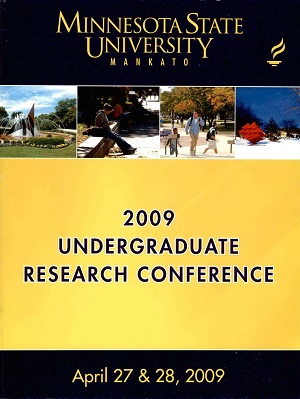Cluster B Personality Disorders Separated by Gender Expectations
Location
CSU 255
Start Date
27-4-2009 8:00 AM
End Date
27-4-2009 10:00 AM
Student's Major
Communication Studies
Student's College
Arts and Humanities
Mentor's Name
Rachel Droogsma
Mentor's Department
Communication Studies
Mentor's College
Arts and Humanities
Description
Criticisms of the Diagnostic and Statistical Manual of Mental Disorders (4*^ ed., text rev.; DSM-IV'TR\ American Psychiatric Association [APA], 2000), the most widely recognized system for classification of psychological disorders in the U.S., including gender discriminating disorders and diagnoses, have existed for all editions of the DSM. Arguably, gender construction has a profound influence on the standards and evaluation of normal and abnormal behaviors. Concern for the presence of gender bias of personality disorders has been raised, in part, by the frequent diagnoses made according to gender stereotypes. The DSM-IV-TR characterizes personality disorders as marked distress and impairment caused by persistent and inflexible thoughts and behaviors that deviate from cultural norms (APA, 2000). Disorders are categorized into three clusters: (A) odd or eccentric, (B) dramatic, emotional, or erratic, and (C) fearful or anxious. With a specific focus on cluster b personality disorders (Antisocial, Borderline, Narcissistic, and Histrionic), I conducted a rhetorical analysis to evaluate evidence of consistency with, or deviation from, gender expected behaviors: four masculine and four feminine expectations, explicated by Wood (2007). Similar underlying characteristics of criterion between disorders were masked by differences of gendered behaviors, i.e. impulsivity, which has been defined differently across the gendered disorders. Disorders were then compared based on similarity of diagnostic characteristics, level of gender consistency, and the prevalence and frequency of gendered diagnoses. Adopting a multidimensional approach for the diagnosis of personality disorders would be more comprehensive and would accommodate for individual human differences and support the development of new treatments.
Cluster B Personality Disorders Separated by Gender Expectations
CSU 255
Criticisms of the Diagnostic and Statistical Manual of Mental Disorders (4*^ ed., text rev.; DSM-IV'TR\ American Psychiatric Association [APA], 2000), the most widely recognized system for classification of psychological disorders in the U.S., including gender discriminating disorders and diagnoses, have existed for all editions of the DSM. Arguably, gender construction has a profound influence on the standards and evaluation of normal and abnormal behaviors. Concern for the presence of gender bias of personality disorders has been raised, in part, by the frequent diagnoses made according to gender stereotypes. The DSM-IV-TR characterizes personality disorders as marked distress and impairment caused by persistent and inflexible thoughts and behaviors that deviate from cultural norms (APA, 2000). Disorders are categorized into three clusters: (A) odd or eccentric, (B) dramatic, emotional, or erratic, and (C) fearful or anxious. With a specific focus on cluster b personality disorders (Antisocial, Borderline, Narcissistic, and Histrionic), I conducted a rhetorical analysis to evaluate evidence of consistency with, or deviation from, gender expected behaviors: four masculine and four feminine expectations, explicated by Wood (2007). Similar underlying characteristics of criterion between disorders were masked by differences of gendered behaviors, i.e. impulsivity, which has been defined differently across the gendered disorders. Disorders were then compared based on similarity of diagnostic characteristics, level of gender consistency, and the prevalence and frequency of gendered diagnoses. Adopting a multidimensional approach for the diagnosis of personality disorders would be more comprehensive and would accommodate for individual human differences and support the development of new treatments.
Recommended Citation
Kloss, Brianna. "Cluster B Personality Disorders Separated by Gender Expectations." Undergraduate Research Symposium, Mankato, MN, April 27, 2009.
https://cornerstone.lib.mnsu.edu/urs/2009/oral-session-03/3



